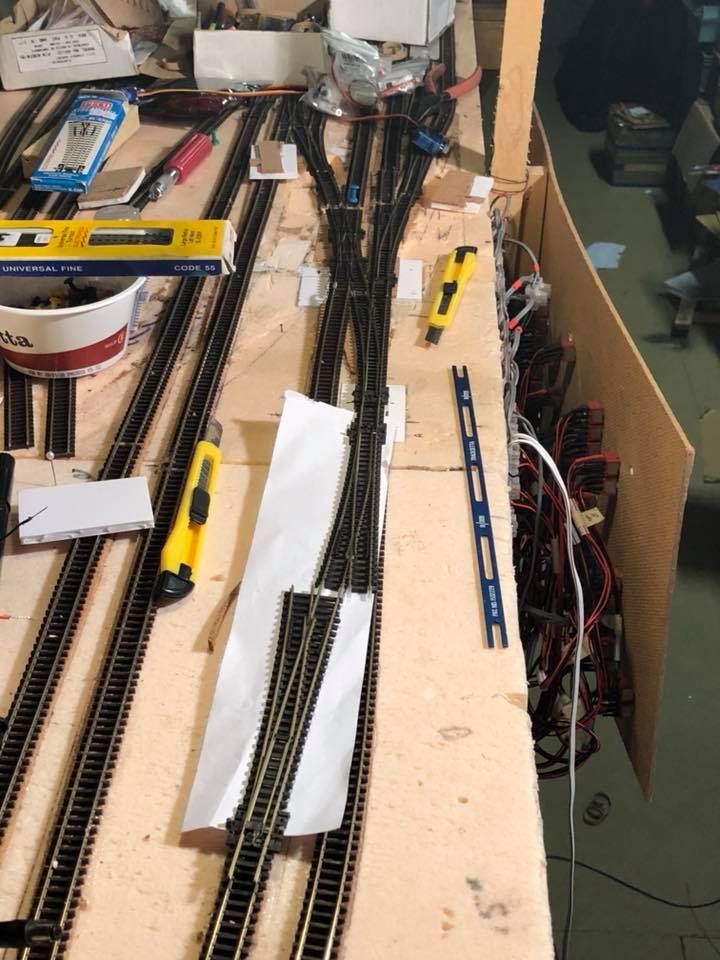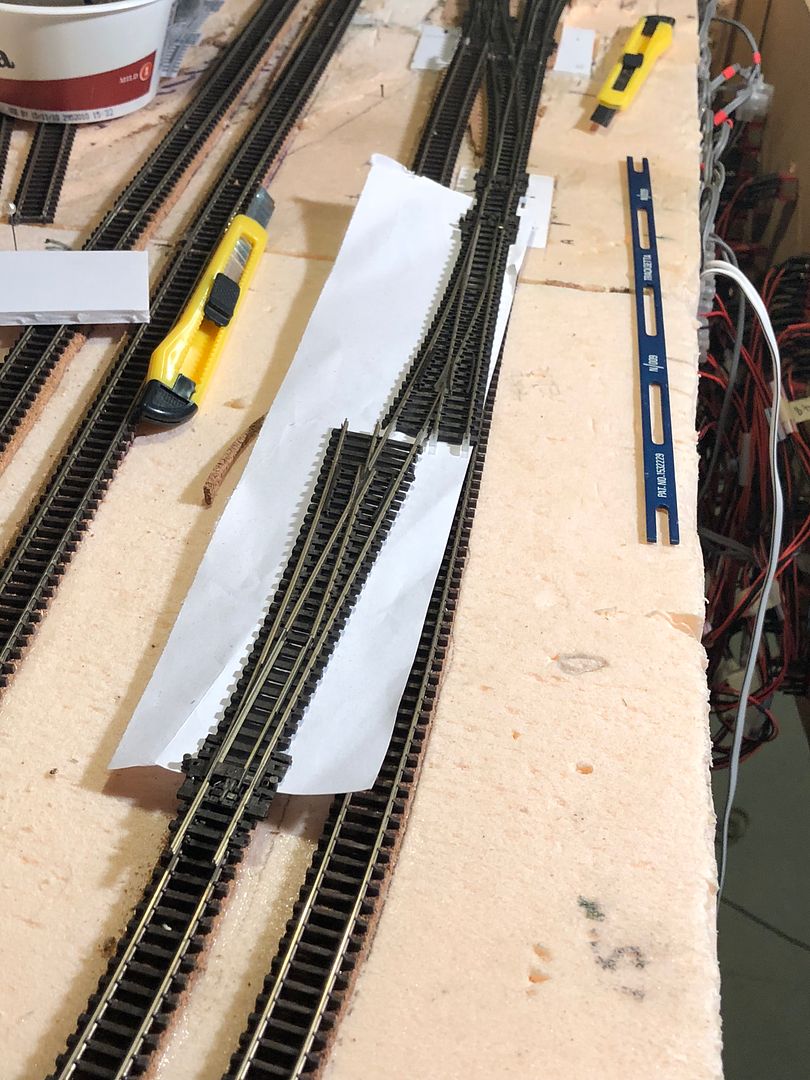While laying the roadbed and walking through operational scenarios, I kept coming back to the crossover that was lost when the yard frame was extended; there simply was not enough real estate to place it in the section before the yard after the ninety-degree curve as before, and I really did not want to move it all of the way back to the stretch of track at Bad Brick. That scene was supposed to represent a "left behind" segment of the line whose fortunes left when the railroad no longer required a section gang or station agent there. Adding the crossover would have re-introduced complexity. Something I desired NOT to do.
Looking at the geometry of the curves coming into the Division Point, I had another epiphany; the radius of the Peco "long radius" turnout would be a great transition from the straight run out of the throat to the curve, and introduce complexity where it deserves to be: the busy end of a commuter run terminating station!
Overview - Seeing Where It Goes
It's possible to see how the arriving trains can reach any point on the approach to the station and yard; trains arriving on the left-hand main can take the first crossover to use the first two "westbound" platforms, or reach the freight yard receiving tracks via the the double slip. Trains running in on the wrong main have full access to all tracks as well, passing over crossover to reach the westbound platforms, or taking the double-slip to reach eastbound platforms or the freight yard receiving track. Trains leaving the yard also have the same options to join either main, with a minimum of "wrong track" running.
Playing About with Station Approach Changes
I had planned the crossover (on the piece of paper) to be much farther in back of the scene, but this epiphany might just work out to keep the complexity close in. By using a right hand turnout, with the straight route of an opposing left-hand turnout forming the crossover, I managed to line up with the curve WITHOUT resorting to a curved turnout. Transition to the curve has only just started at the farthest turnout on the outside track, so only a slight alignment adjustment is needed on this track.
The corner seems to naturally join on the inside track, so I have an added benefit of using large radius corners on the main line. The theory is that a train running “normal” left-hand may need to take the West-bound (right hand) platform tracks, but will never take the crossover and then be diverted back to the “normal” route unless in an emergency, such as a defective turnout.
While appearing operationally and aesthetically feasible, this also keeps in line with the desire to keep the long straightaway at Bad Brick leading into the corner before this area open and clear, almost desolate. The scene will feature an old (abandoned) depot and section foreman's house, but little other evidence of railroad activity, where trains merely pass a sign which still tells of its name.
It was a bit too cold to get much else done, but I hope to get all of the servos mounted and track fixed in place before spring. Over the last year I have acquired a couple of SD40-2s as well s trailer on flat car (tofc) cars so am itching to re-enact "Falcon Service" along the mainline!


No comments:
Post a Comment